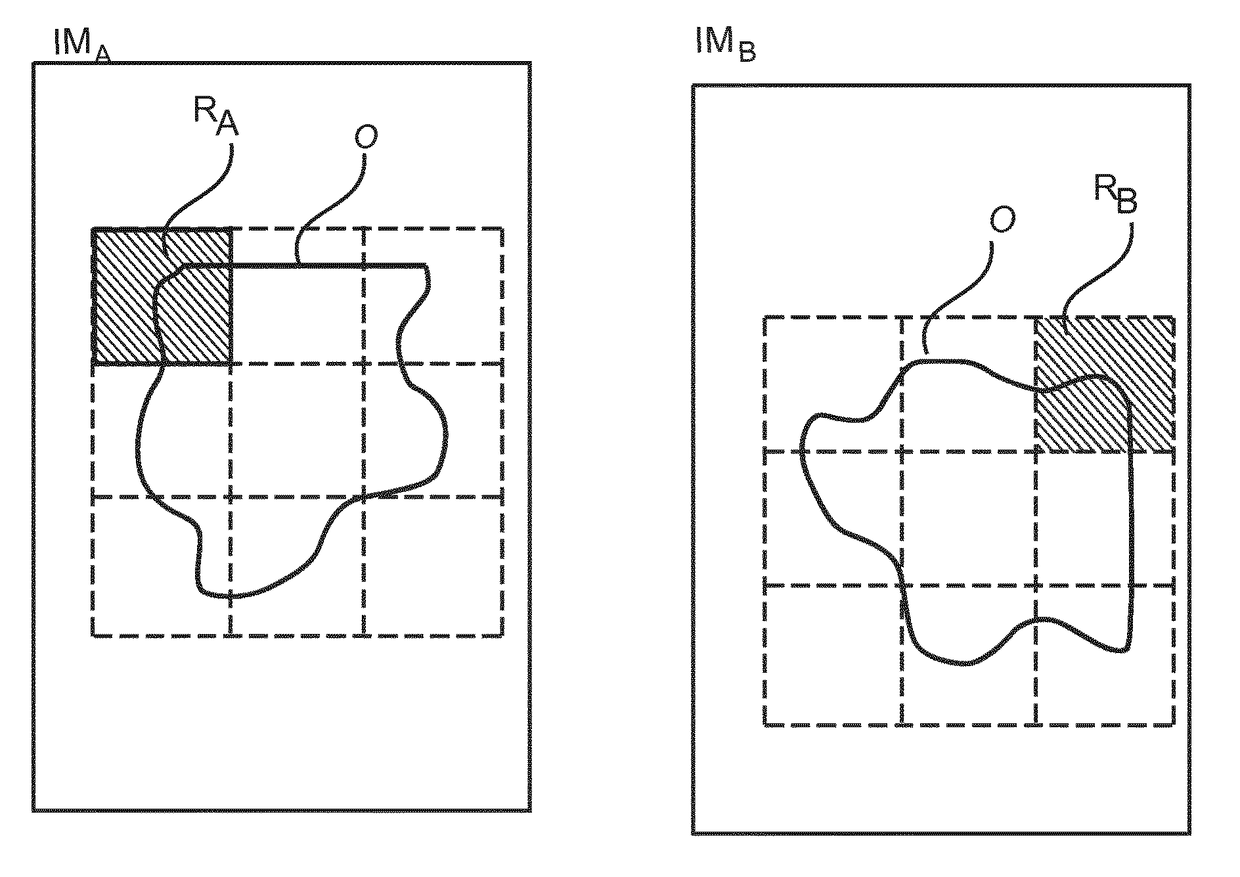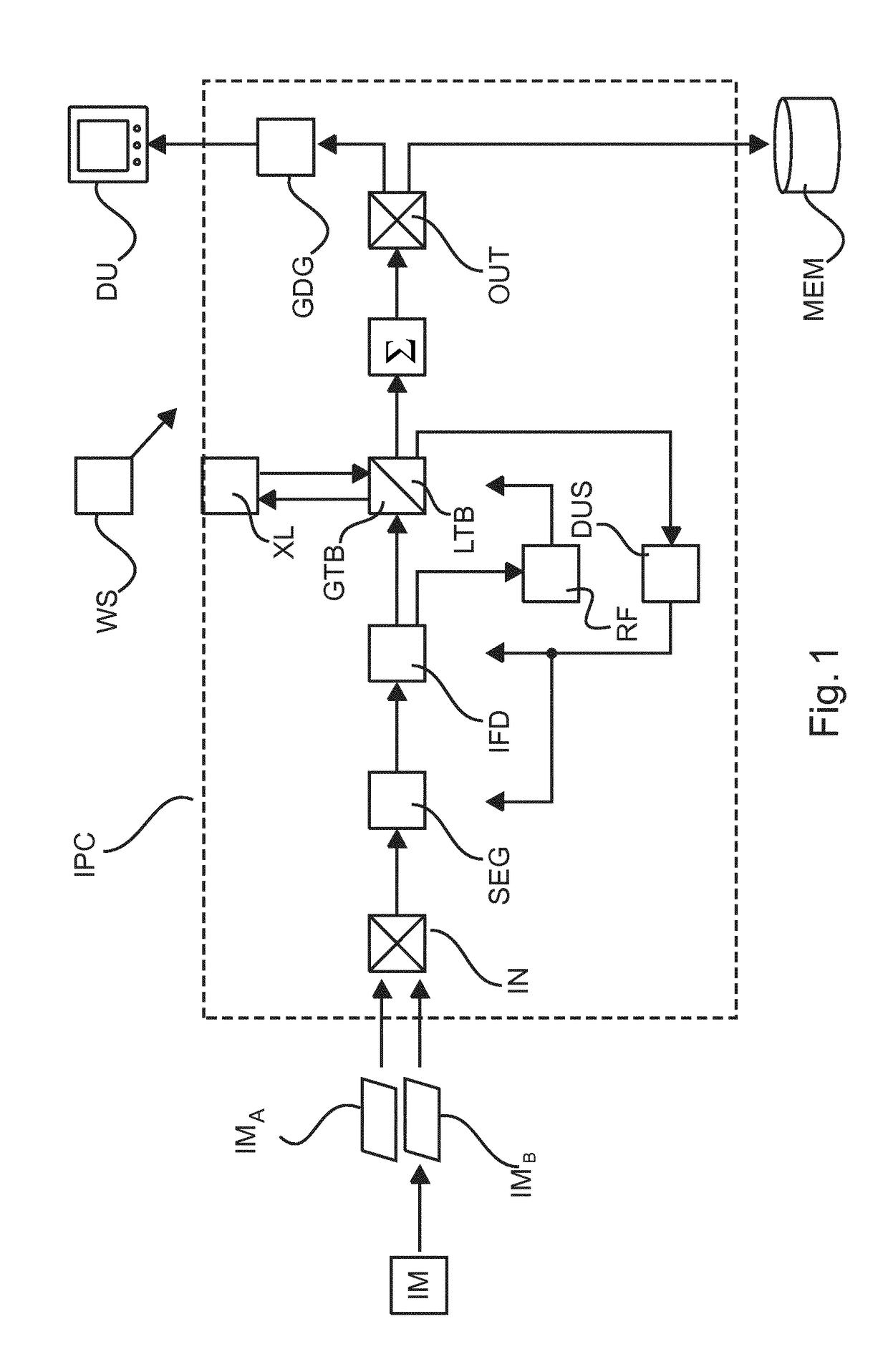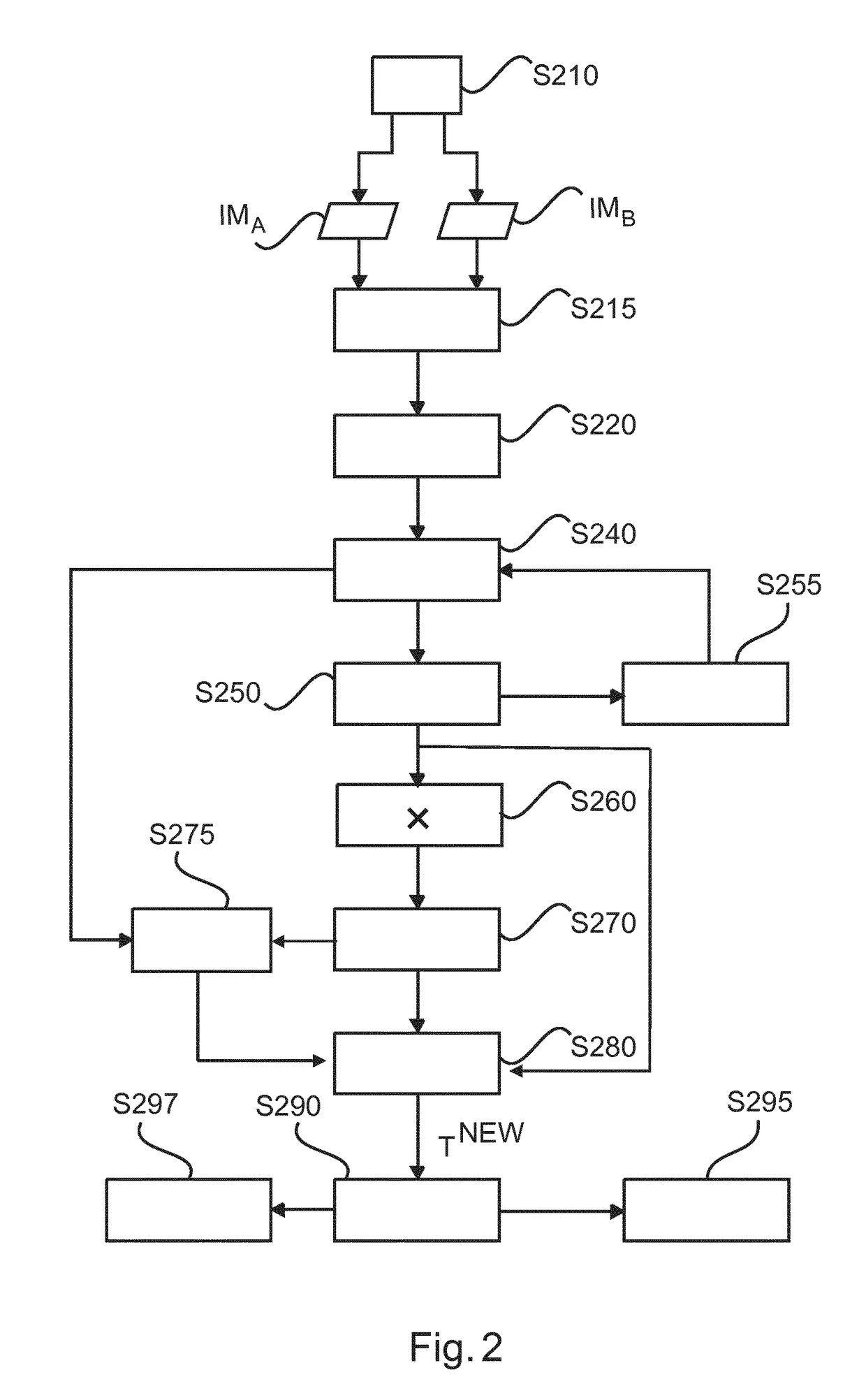Registration of histopathology images
- Summary
- Abstract
- Description
- Claims
- Application Information
AI Technical Summary
Benefits of technology
Problems solved by technology
Method used
Image
Examples
Embodiment Construction
[0049]With reference to FIG. 1, there is shown a block diagram of an image processing system as envisaged herein, particularly (but not necessarily only) for the purpose of digital pathology imaging.
[0050]The imaging system includes an imaging modality IM that supplies digital images of histological slices for instance.
[0051]The imaging system further includes an image processing component IPC for processing the supplied images. For ease of reference these images or frames will be referred to herein as image IMA and image IMB with the understanding that the following is not meant to be restricted to two images only. The image processing component IPC allows spatially registering the (at least) two images IMA,IMB with respect to each other. The proposed image registration has been found to be particularly robust against morphological or other property changes of corresponding structures as recorded in the two images.
[0052]We now first turn to briefly outline some particulars of digit...
PUM
 Login to View More
Login to View More Abstract
Description
Claims
Application Information
 Login to View More
Login to View More - R&D
- Intellectual Property
- Life Sciences
- Materials
- Tech Scout
- Unparalleled Data Quality
- Higher Quality Content
- 60% Fewer Hallucinations
Browse by: Latest US Patents, China's latest patents, Technical Efficacy Thesaurus, Application Domain, Technology Topic, Popular Technical Reports.
© 2025 PatSnap. All rights reserved.Legal|Privacy policy|Modern Slavery Act Transparency Statement|Sitemap|About US| Contact US: help@patsnap.com



